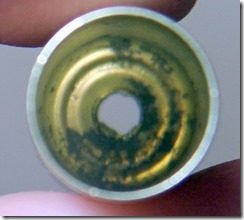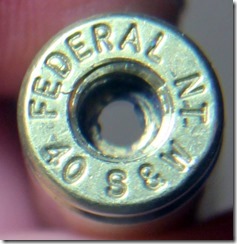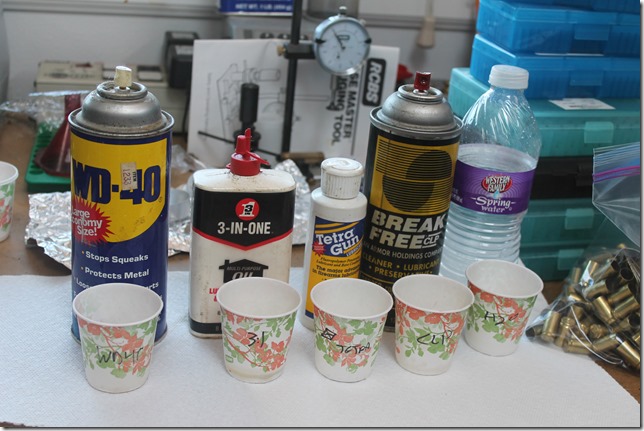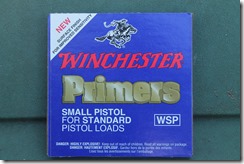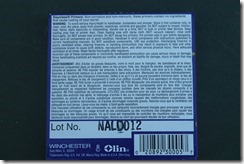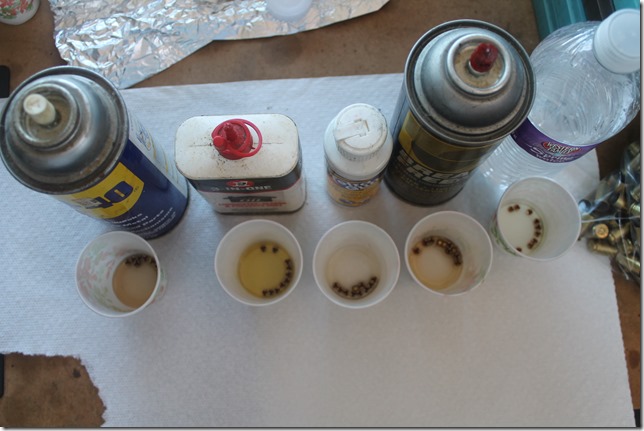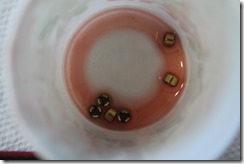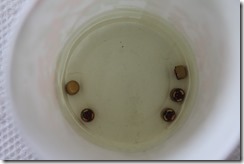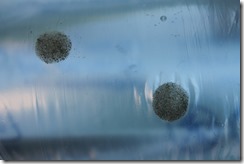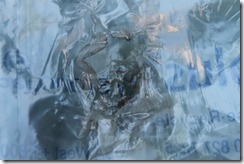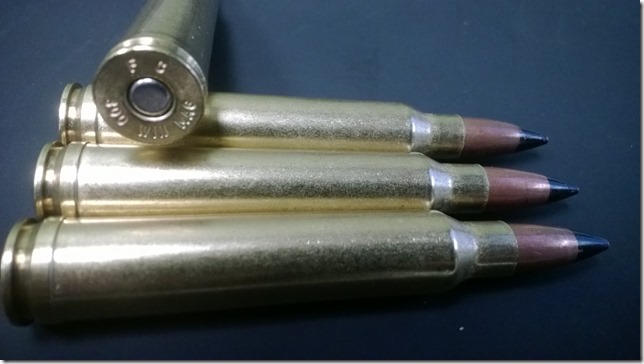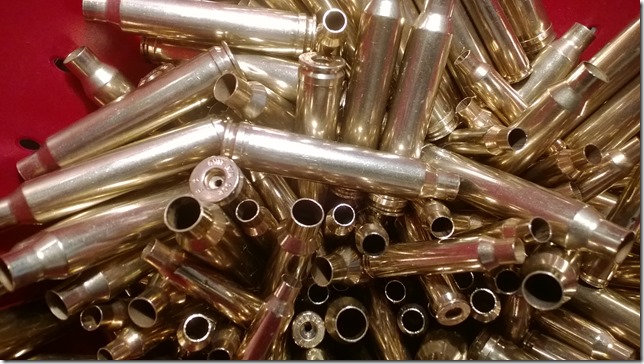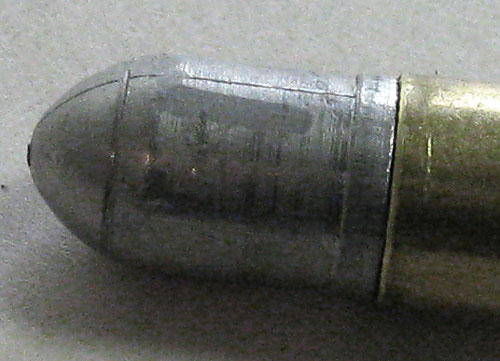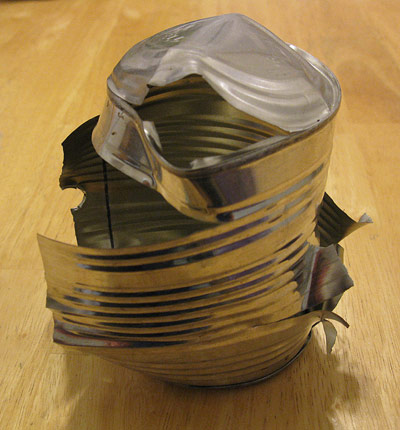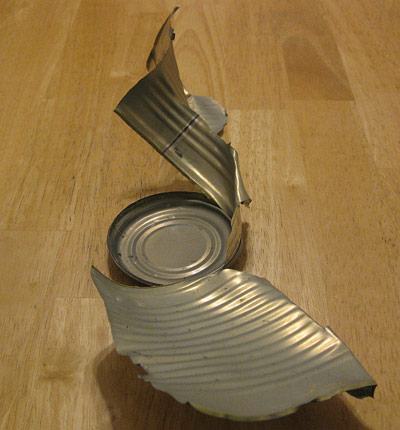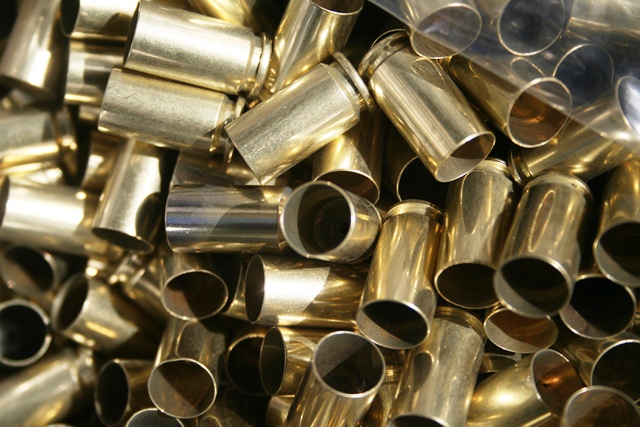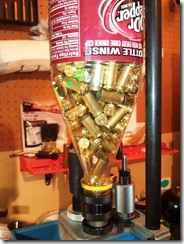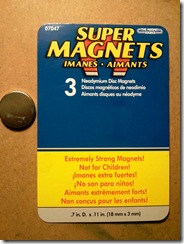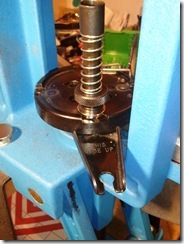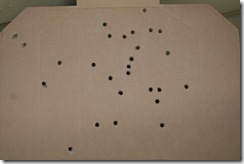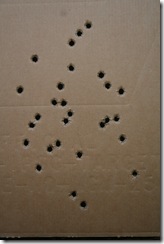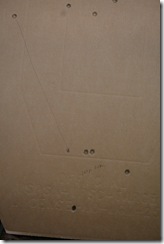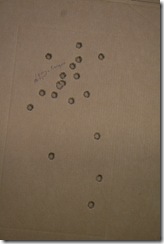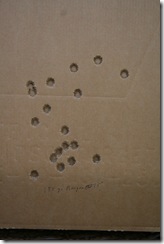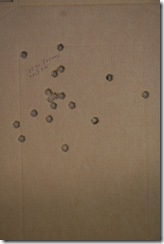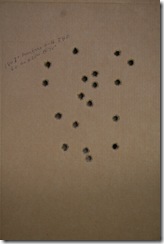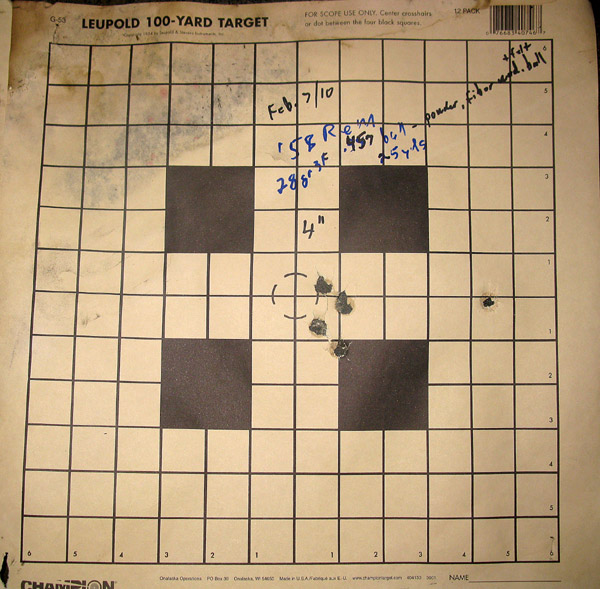Down the rabbit hole into the esoteric. Before the current ammo shortage I decided to start casting bullets, just because I liked the idea of an extra level of independence. The 30-30 cast bullets worked OK but there’s more to do there. This time though its the 10 mm Auto.
I’ve been loading the Hornady 180 XTPs with good results, but I wanted a 200 grain cast bullet too. The RCBS 200 SWC has gotten good reviews so I got that two cavity mold a while back. The mold handles I use for the Lyman molds didn’t fit the new RCBS mold, and people were starting to run low on things. Buffalo Arms in Idaho sells a hand-fabricated-looking handle set that works like a pair of Vice-Grips. Pretty expensive and heavy, but they had them in stock. They’re great. You get VERY consistent closing pressure for each pour. I weighed 20 already lubed bullets tonight and the extreme spread was 1.5 grains, 201 gr +/- .75.
Of course, to “save money” casting bullets from one dollar per pound lead, I had to buy a lube sizer. Seating the lead bullets, I was shaving lead on the case mouths, so I bought a 10 mm M die. It expands deeper into the case than a regular expander die, plus it makes a wider spot at the mouth. I’d been seating crimping in one swipe with the jacketed bullets, but since that’s not really an option for cast, I had to readjust my otherwise permanently adjusted seating die. Now I figure I’ll buy another seat die in this “money saving” venture.
To prevent the case mouth shaving lead from the bullet upon seating, I had to put LOTS more flair on the cases. I tried chamfering the mouths a little and that didn’t help much, so now I’m working the brass a lot more, which means it will work harden sooner. The bullets aren’t getting shaved now, but the cases are so wide at the mouth that the seating die can’t be lowered nearly as much as normal or the crimp taper starts to erase that wide belling, shaving lead anyway. And that means that the seating stem is just a bit too short, so with the locking collar removed from the seating stem and the stem screwed in as far as it will go, I still have to screw the die body down to where it is narrowing the flair just a bit. That means there is no support on the case at all except at the very mouth. I noticed that if I nicely align the bullets on the case mouth by hand before seating, they now don’t get shaved. When the bullets shave, the lead that’s stuck in front of the case mouth interferes with head spacing. It’s not serious, but it is annoying.
Loading dies, at least for straight wall auto cases, are not made with cast bullets in mind. These are RCBS dies, but I doubt there’d be much difference. The whole paradigm is wrong. Since you apparently need much more flair at the mouth, and you’re shoving the case up into the die mouth-first, your die has to be too large to support any part of the case except for the very mouth, or else it will erase your mouth flair. Instead of going mouth-first into the seating die, the cases should be going head-first into a support die, and then up to a seating stem, with the bullet pre aligned before it touches the case. That way, much of the case, and all of the bullet’s drive bands, could be aligned prior to seating. It couldn’t be done “right”, in my opinion, any other way.
But we make it work, somehow, with what we have. There’s still more testing to do, but initially I got two groups of just under 5 inches at 20 yards standing unsupported. Lots more recoil than the 180 XTP loads, but my chrono got lost along a 20 mile stretch of highway in a snowstorm so no vel data. A third group was MUCH larger, so I quit. There was leading in the Lone Wolf barrel. That was before I eliminated the lead shaving at seating. We’ll see later whether the shaving verses not shaving makes any difference.
The load is 9.4 grains Blue Dot, CCI 300, OAL 1.255, #2 alloy, Super Molly lube that came with the Lyman sizer. Still don’t know if it’s a keeper, but I do know I can get off at least 10 decent shots. Whoopie, eh?
Like this:
Like Loading...

